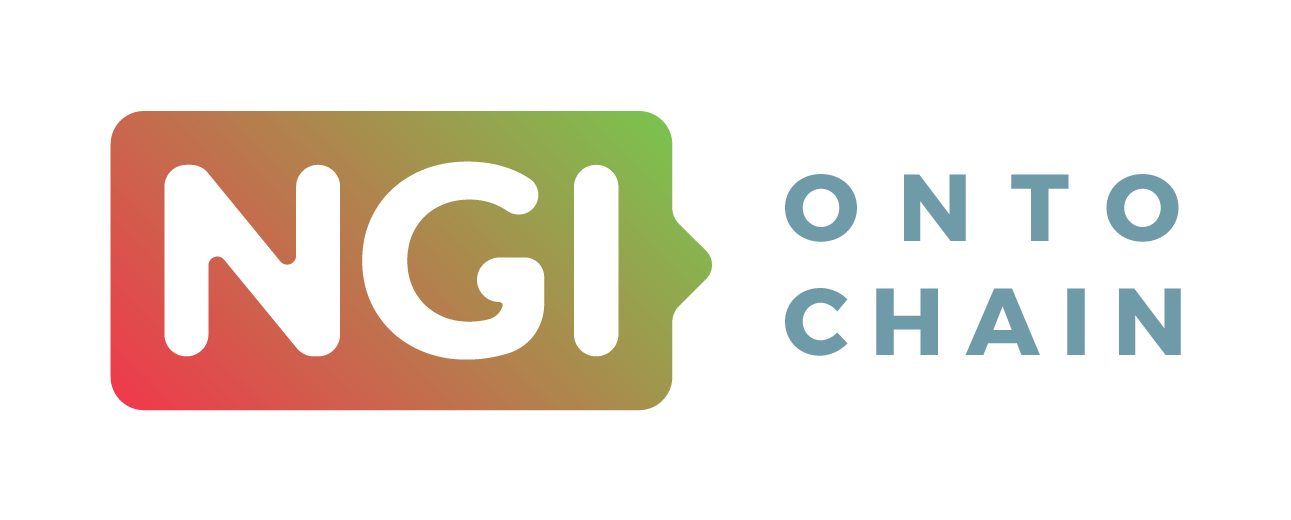
ABOUT THE PROJECT
PiSwap: Price-Building-Mechanism for asymmetric NFT-markets
Is Beeples $69 Mio NFT fairly valued? Should it had been even more? Or just a fraction? The current NFT-Market often shows an imbalance of power in transactions causing market failure in the worst case. There is a lack of transparency in regard to price building and quality.
As of August 2021, the NFT market has exceeded a monthly trading volume of US$680 million, showing a growth of 6,000% in 2021 and individual sales of roughly 220,000 (08/2021; see nonfungible.com). While 53% of these sales (117,023) took place on the Primary Market, the trading volume of $107 million achieved there represents only 16% of the total market. The Secondary Market thus accounts for the lion's share of the total volume of the NFT market. In figures its trading volume is around US$580 million per month what is 450% compared to the Primary Market.
Our Solution – PiSwap by Bull-Bear-Token
1.) Crowdsensed Market-Enabling
PiSwap solves the lack of potential buyers on primary market and the price fluctuations on secondary market by completing and enabling it to a wider audience.
2.) Decentralized Price-Building
Traded on exchanges Bull-Bear-Concepts (openend long/short) offer a crowdsensed and transparent price-building mechanism to determin the value of the underlying asset (here: NFT).
3.) Automated Liquidity-Providing
Enabling NFT-markets sufficient liquidity is key. By minting bull-bear-token any user can provide liquidity to the system for any NFT (see UniSwap) acting as market maker.
Website: Piswap.xyz
Motivation for the project:
One common issue of NFT-markets is their oftentimes limited liquidity. Improving liquidity on decentralized primary market platforms is therefore achieved by decentralizing the automated market-maker-modell present markets know from traditional exchanges. Market participants like UniSwap offer derivatives – swaps – by opening up a trading pair providing liquidity. All that runs perfect in case of interchangeable assets but is totally limited for not otherwise replaceable tokens like NFTs.
Due to their uniqueness or at least their predefined number of unique tokens NFTs are available for only a small number of holders, mostly just one. Opening the NFT-market to investors by offering unlimited derivatives is comparable to the traditional ETF-market and its idea of mirroring the price development of an underlying asset (e.g. Gold) or assetclass (precious metals).
Generic use case description:
Providing markets with sufficient liquidity and widely accepted price-building-mechanisms is inevitable for the functioning and completeness of the markets – PiSwap is inevitable!
The foresai is relevant for any NFT-market in the future, might it be patents, real-estate, supply-chain, CO2-emissions, software-licencing, fashion, Twitter, collectibles, art, gaming, sport, music, video, … (see here).
Essential functionalities:
PiSwap is created as a decentralized autonomous market mechanism for primary and secondary markets. Its value proposition is:
1. Increasing Transparency
2. Increasing Completeness
3. Increasing Access/Participation
The innovation of PiSwap is the usage of market-mechanisms traditionally used in FIAT and stock markets to predict the value of the underlying asset, the so called Bull-Bear-Certificate.
Enabling this tool for the NFT-markets will expand transparency in price-building, market completeness by providing access to almost any new asset and would open up arbitrage trading options strengthening the previous mentioned price-building mechanism.
How these functionalities can be integrated within the software ecosystem:
The smart contracts can be deployed and interfaced by other projects utilizing their functionality for specific functionalities. If necessary, smart contracts can also be adjusted.
Gap being addressed:
1.) Asymmetric Markets
No proper match of primary and secondary markets in regard of their basic market functions.
2.) Uncertain Value
Investors seek participation in specific NFTs but are uncertain about specific value due to lack of transparency in price-building.
3.) Illiquid Markets
Especially the primary NFT markets are facing monetary illiquidity while secondary markets face asset illiquidity.
Expected benefits achieved with the novel technology building blocks:
PiSwap is not only differentiating to the state of the art. Rather than this it’s innovating or even disrupting the NFT market at all by distributing an automated market maker modell with an automated liquidity providing. At the time of writing there is no such solution available and therefore PiSwap would open up new possibilities.
The basic concept of swapping assets is well known and used as well in the traditional financial markets as well as in the blockchain market. The innovation of PiSwap is the usage of market-mechanisms traditionally used in FIAT and stock markets to predict the value of the underlying asset, the so called Bull-Bear-Certificate.
Potential demonstration scenario:
Ask yourself if you would expect the Beeples NFT at a valuation of $ 69 Mio and if this is the real value… or is it just a hype? PiSwap helps defining the price – crowdsensed.
1.) Find Beepls smart contract address
a. List at PiSwap and
b. set price at ≈ 15,300 ETH (≈$ 69 Mio)
c. Enable market by minting trading pair
d. Provide liquidity and/or
e. Buy bull-token if NFT seems undervalued or
f. Buy bear-token if NFT seems overvalued
g. Price reflects crowdsensed value
2.) …… sell/buy bull/bear-token for arbitrage
3.) Sell NFT o market if sufficient liquidity provided
4.) Buy NFT from market
5.) Tbc…
PROJECT OUTCOMES
Users can use NFTSwap to create markets for any owned or not-owned NFT by minting a derivative NFT. This derivative market will be provided with liquidity and will create a Bull-Bear-Token allowing users to participate in the price building of this particular NFT.
Demo:
Repositories:
https://github.com/PiSwapProtocol/PiSwap-core
https://github.com/PiSwapProtocol/PiSwapplayground
Currently open to the ONTOCHAIN community only. Reach out if you need access.
Documentation:
More details:
Use case Scenario
Scenario 1 - How it works for users
In this scenario, a user has found a NFT of interest in a marketplace (e.g., OpenSea, Rarible), but they are not sure that the price requested by the seller is fair. The following steps take place when a user uses the service:
-
Find the address of the NFT smart contract, enter it in NFTSwap and click “Create market”;
-
Open a derivative market for that NFT by providing some initial liquidity to the market, by minting the first portion of a Bull & Bear Token and setting the expected price;
-
If already available, the Current NFT price is pulled from the origin marketplace and displayed automatically;
-
If a user thinks the NFT is undervalued, they buy the BULL-Token: the price of this derivative NFT will increase and vice versa if the NFT is overvalued.
-
Each buy/sell of Bull- or Bear-token impacts the price of the derivative NFT.
Scenario 2 - How it works for artists
In this scenario, artists will be able to determine the price of the artwork they would like to publish and sell. The scenario follows the following steps:
-
Create an NFT by using an individual Smart Contract;
-
List the NFT and open derivative market for that NFT by providing initial liquidity to the market, minting the first portion of Bull & Bear Token and setting the expected price.
-
The more liquidity is provided, the more bull-/bear-tokens get minted (i.e., if liquidity succeeds e.g., 20 times of NFT-price, the NFT would be sold)
-
the artist is able to sell the listed NFT to the protocol.
Scenario 3 - How it works for the Liquidity Providers
This scenario is designed for a person that is interested in art, knows the market and involved artists, but is not interested in buying NFTs. The scenario is as follows:
-
A new hidden champion (artist) you know has created a NFT collection. The user is sure that the market will increase with this artist and more people will be interested in his artwork/his NFTs while they are not able to buy the one-of-a-kind-artwork.
-
Open the NFT market by providing liquidity and setting an initial price.
-
If more people get interested in the artwork, the traction on that NFT will increase and therefore more trades on the Bull-Bear-Market will happen.
-
Liquidity Providers receive fees on any trade.
Scenario 4 - How it works for arbitrageurs
In this scenario, a user is not interested in art but is interested in trading better in arbitrage opportunities. Users can see the Beeples-NFT listed on PiSwap and the evaluation shows a price of 60 Mio. If the user thinks this is not and the NFT should be worth much less, not more than 10 Mio. The following steps take place when a user uses the service:
Step 1: Buy Bear-Token and see NFT-price is going down while Bear-Token-Price is going up.
Step 2: If more buyers devalue the NFT its price will decrease further more and Bull-Tokens will decrease in price
Step 3: Arbitrage opportunities pop up by trading the increased Bear-Token against the market.
Scenario 5 - How it works for stakers
If a user is not interested in trading or art or any other investment of that kind, but in interest. The user will be able to gain earnings by staking the protocol token against governance tokens that earns a proportional amount of the protocol fees that result from minting-/burning.
ONTOCHAIN partners that support the scenario
NFTwatch: The collected metadata offered by NFTWatch could be seen as a crawler for newly minted NFTs all over the world. It could end up as a major-NFT-library providing a valid overview on the market, keeping with listed but undiscovered hidden stars. >> it could be implemented by offering a “search-function” based on the NFTWatch RDF graph. It is expected that the visibility of unknown NFTs could be increased as a result and markets for more items will be created.
Bowler: is aiming to create a tool offering customization of smart contract on click, comparable to prefab text modules . This offers creators deploying individualized smart contracts that are evident for PiSwap listings. >> It could be implemented by offering BOWLER-features on PiSwap enabling creators to set up (super)-customized smart contracts before listing their NFT on PiSwap for price-discovery. The direction of the synergie goes from Bowler to PiSwap, as Bowler provides Services to the PiSwap-protocol/-platform.
PerunX/Polycrypt: Exchange of information regarding liquidity pool challenges both teams were facing; Synergy on a research level / exchange of information. Possibility of scaling solutions based on PerunX (cross-chain-approach) in the future.
DW Marking: The project is developing a watermark for data provenance and proving ownership of original data. This feature might be interesting as an add-on for PiSwap as the system is in need for reliable data provenance and ownership. DW Marking could also provide aggregated data to NFTWatch. >> it could be implemented by setting up an API for fetching metadata, providing a classification-system on trust-based provenance data.
Semantic content and content transfer
For the PiSwap NFT derivative market Dapp the following content is required:
-
Smart Contract Address of original NFT
-
Specific ID of original NFT
-
Relevant blockchain (Ethereum, Polygon, Fantom, BSC, …)
TEAM
Daniel is an experienced Blockchain Developer on Ethereum and various other protocols.
Andreas is 20+ years working as business developer and marcom specialist in the financial industry.
Marc is an entrepreneurial business angel with deep understanding of the EU financial regulation and legal and tax related aspects in financial business.





 This project has received funding from the European Union’s Horizon 2020 research and innovation programme under grant agreement No 957338
This project has received funding from the European Union’s Horizon 2020 research and innovation programme under grant agreement No 957338




